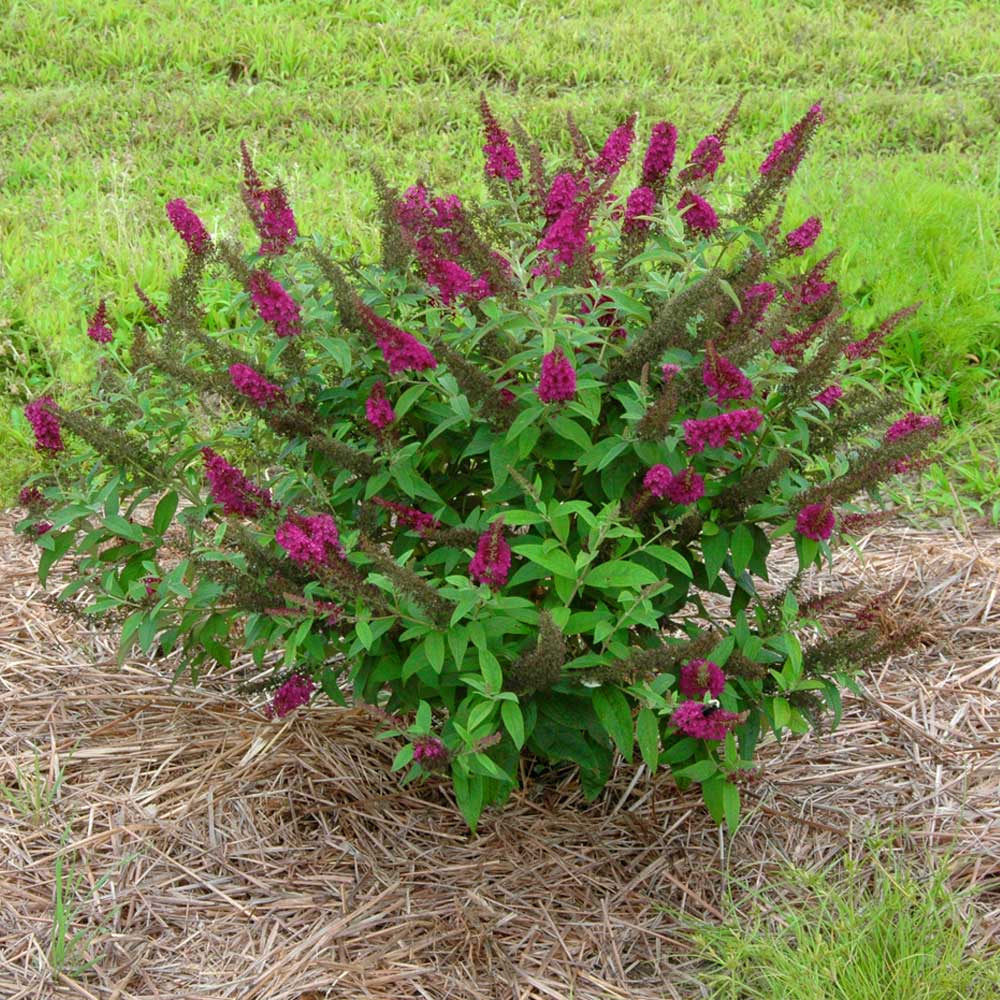By Debbie Roland and
Emmy Ulmschneider
Master Gardeners
Butterfly bush (Buddleja davidii) is a fast-growing, deciduous shrub with masses of blossoms from summer to autumn and it is attractive to butterflies and other nectar loving insects.
This bush is also called summer lilac and the flowers come in many colors. Butterfly bush can grow up to 15’ tall and butterflies seem to like the mauve blooms better than the white and dark purple ones.
It is low maintenance just needing an annual pruning but dead heading is a must during the growing season. The deadheading will encourage flowering and help to maintain a compact shape.

Butterfly bush is a perfect illustration of the dilemma surrounding choosing plants for your yard. It was originally imported from China has been classified as an invasive species in roughly 20 states by the Invasive Plant Atlas of the United States. And although it is not yet listed on the Texas Invasive Plant list, it may be coming. Our gardens are full of non-native plants. Many were introduced into the plant trade because they attracted fewer insect pests having no natural enemies here. And not all of them have become invasive. However, the ones that are invasive can take over easily and crowd out our very beneficial native plants. Butterfly bush is an aggressive invader along stream banks in wetter regions of our country. Each plant can produce thousands of tiny seeds which are wind dispersed. In addition, a mature plant can come back from the roots. So, if you choose to plant, this plant, you must RELIGIOUSLY DEADHEAD it so the seeds do not have a chance to disperse. Another alternative is to plant one of the cultivars that are either sterile or produce fewer seeds.
Although a sterile plant may not be invasive and provide nectar for insects, they are still not a larval host plant. For us the decision is easy. We plant native plants because they are beautiful, they provide the resources that our urban wildlife needs to survive.
And there are some native alternatives. The Butterfly-Bush family, Buddlejaceae, has native, American plants. The Lady Bird Johnson Native Plant Finder lists four species. One of them, Wooly Butterfly Bush, Buddleja marrubiifolia,can be found in the plant trade. It is winter tender so watch where you plant it. A late fall bloomer, Ageratina havanensis, Fragrant White Mistflower, comes alive with nectaring insects at the end of fall as does its Trans-Pecos cousin, Ageratina wrightii or White Mistflower. Our native goldenrods and asters are also great choices to add resources for our native butterflies and bees.
For more information, call the AgriLife office at 498-4071 in Odessa or at 686-4700 in Midland or visit aggie-horticulture.tamu.edu or westtexasgardening.org.



